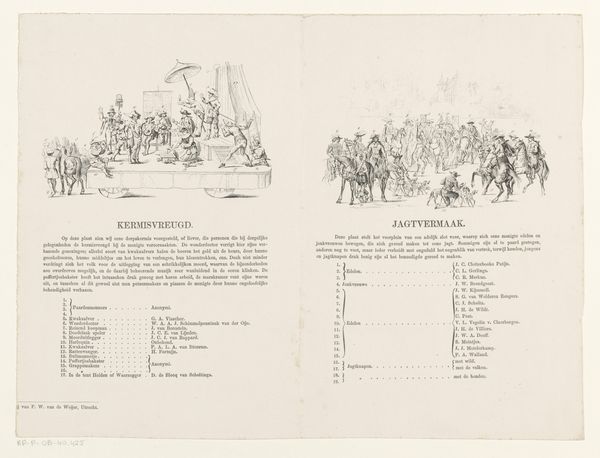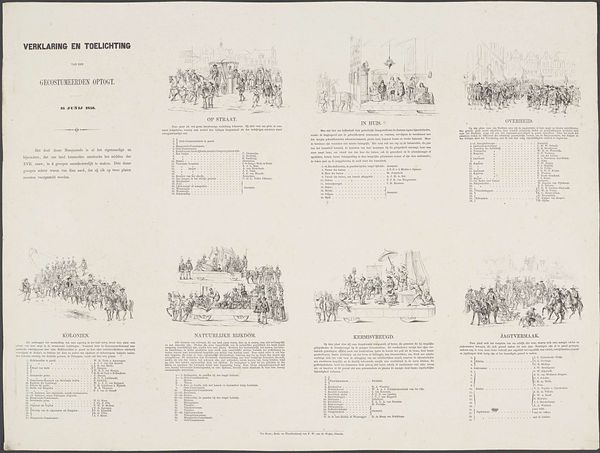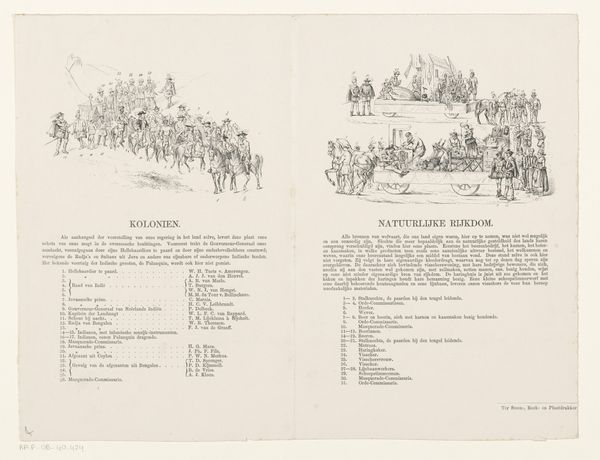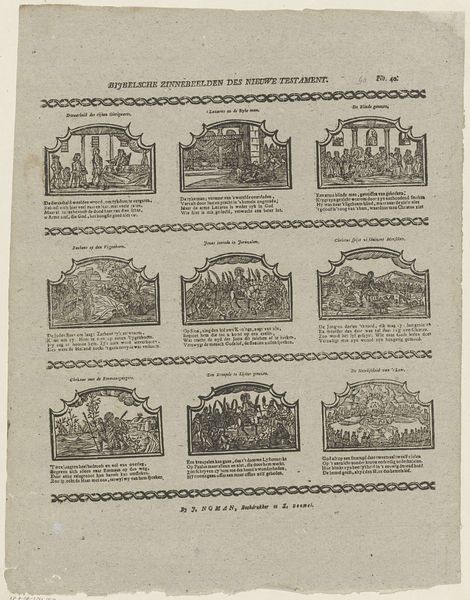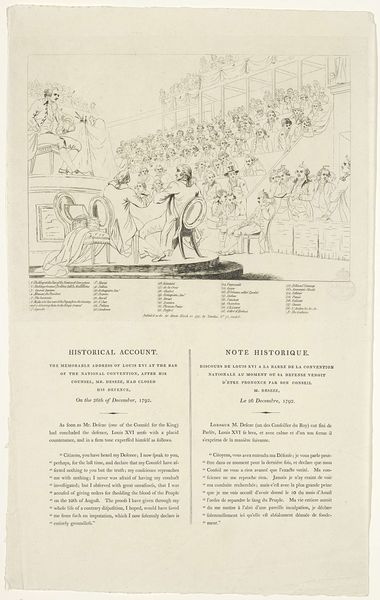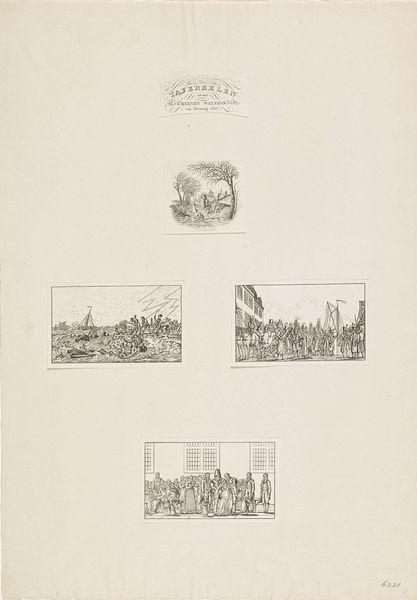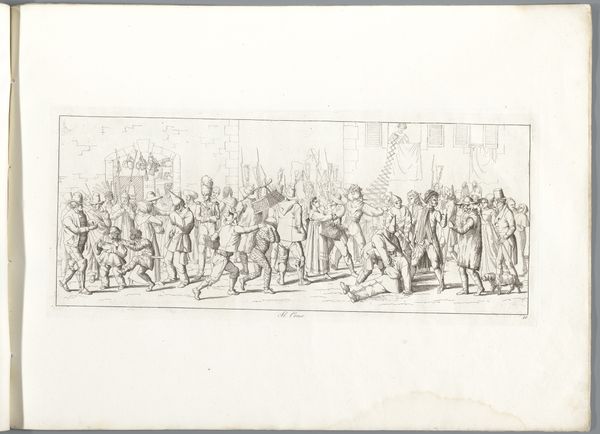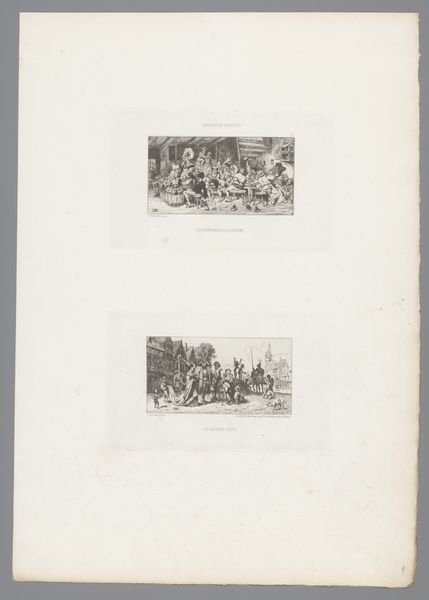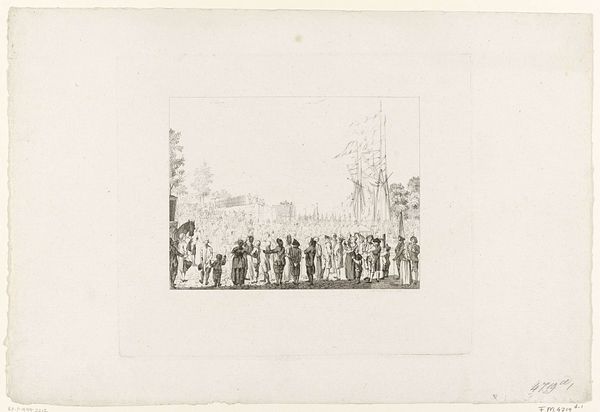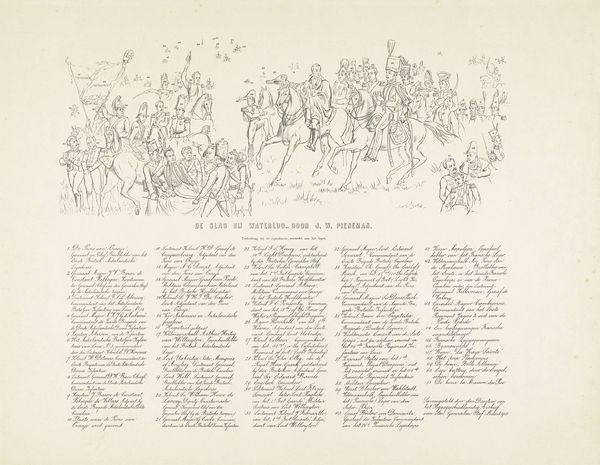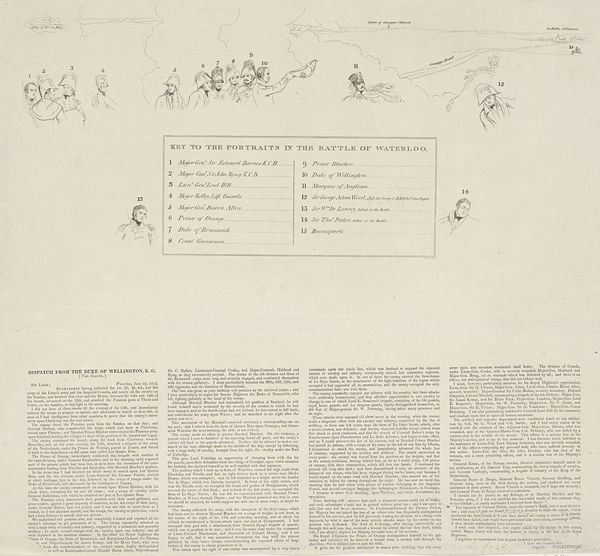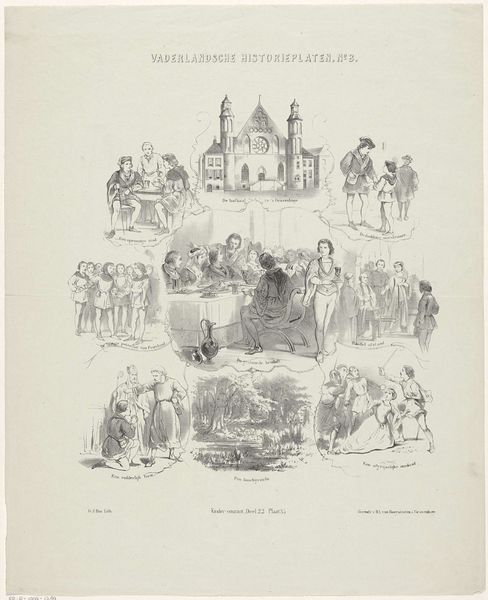
Verklaring en legenda bij tweede en derde prent van Utrechtse maskerade in 1856 1856
0:00
0:00
willempieterhoevenaar
Rijksmuseum
print, engraving
#
dutch-golden-age
# print
#
old engraving style
#
genre-painting
#
history-painting
#
engraving
Dimensions: height 249 mm, width 330 mm
Copyright: Rijks Museum: Open Domain
Curator: Here we have Willem Pieter Hoevenaar’s “Verklaring en legenda bij tweede en derde prent van Utrechtse maskerade in 1856,” created in 1856. It's an engraving currently residing in the Rijksmuseum. What are your first thoughts? Editor: The split composition is immediately striking. The interior scene, though meticulously detailed, feels almost dreamlike in contrast to the rigidity of the public procession. The starkness of the engraving technique only emphasizes this sense of division. Curator: Absolutely. Hoevenaar crafted this piece as an explanatory sheet for prints depicting a masked parade in Utrecht. This kind of public spectacle was very calculated. Editor: That’s clear enough. Look at the material elements, for example: the costumes, likely costly and specifically chosen; the controlled lines of the engraving mirroring the ordered arrangement of the parade participants, implying power and civic identity. Curator: Precisely. These parades were significant displays of civic pride and often reinforced social hierarchies through symbolic representations and the involvement of prominent citizens. Editor: The engraving itself functions similarly. Its reproducibility allowed for widespread dissemination of the parade’s intended message of unity and order. A very effective form of propaganda, if I may. Curator: I agree, it served to solidify community identity but also, as you pointed out, to reinforce existing power structures. The interior scene… the figures within might represent more domestic or private virtues, counterbalancing the very public “Overheid,” or "Authority" displayed in the procession. Editor: This comparison really clarifies how carefully orchestrated these displays of public unity truly were. It invites the viewer to unpack the social complexities represented by each distinct part, both inside and outside. Curator: It’s a fascinating glimpse into 19th-century Dutch society and how public image was carefully cultivated and disseminated. Editor: I agree. This work highlights how a specific medium such as the print was chosen as it could carry symbolic weight but also be widely distributed. It underscores the critical role of material in constructing identity, be it personal or civic.
Comments
No comments
Be the first to comment and join the conversation on the ultimate creative platform.
